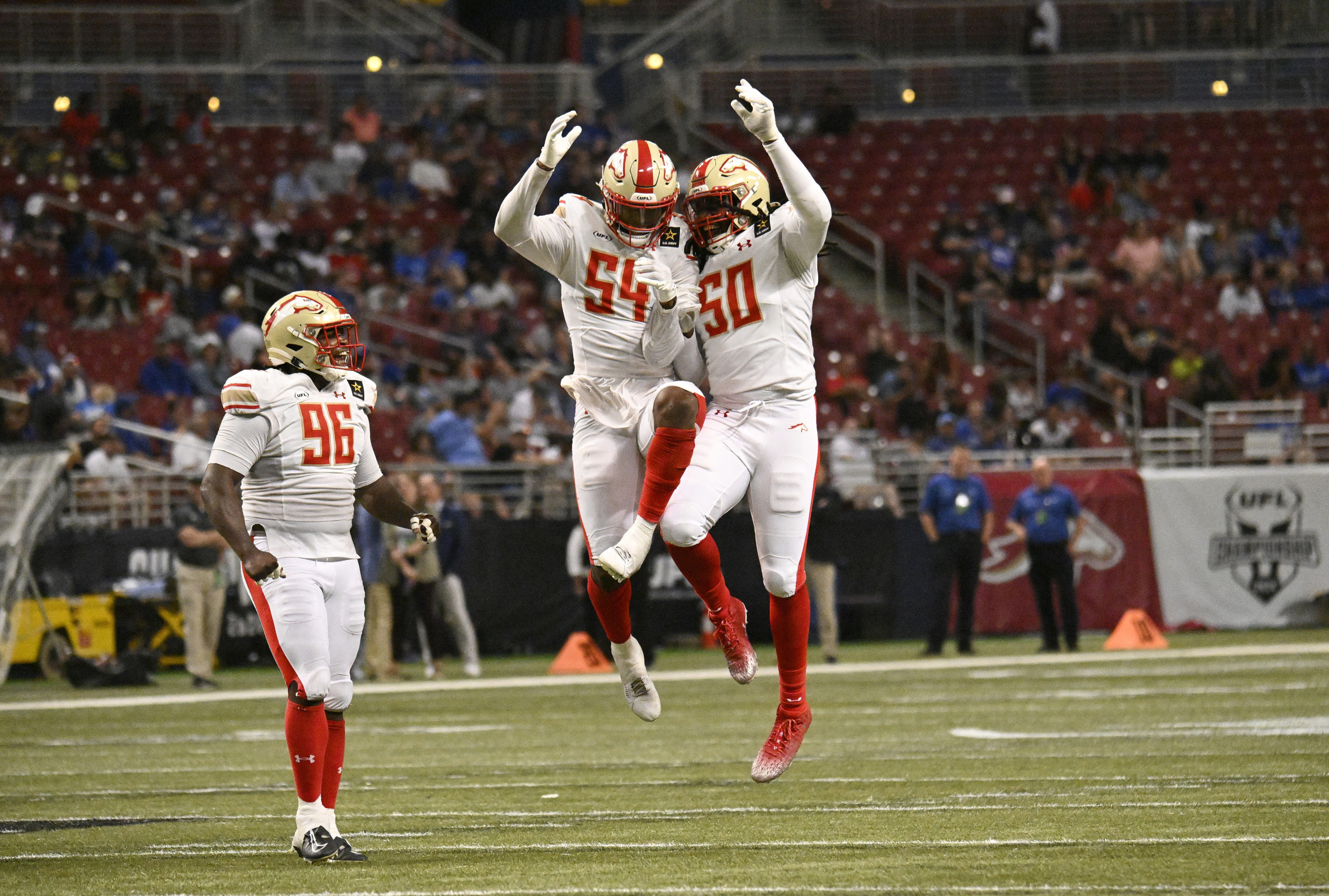Lifestyle
A Swiss museum will remove 5 paintings potentially looted by Nazis

A man walks past the entrance of the Kunsthaus Zurich on March 14, 2023. The museum is investigating the provenance of paintings over a possible connection to Nazi looting.
Arnd Wiegmann/AFP via Getty Images
hide caption
toggle caption
Arnd Wiegmann/AFP via Getty Images
A Swiss museum said five artworks will be removed from public view on June 20 as it collaborates with the owner of the artworks to investigate whether the works were looted by Nazis during World War II.
On longterm loan to the Kunsthaus Zurich museum from collection owner the Foundation E. G. Bührle (or Bührle Foundation) the paintings in question are Jardin de Monet à Giverny by Claude Monet, Vincent van Gogh’s The Old Tower, La route montante by Paul Gauguin, Gustave Courbet’s Portrait of the Sculptor Louis-Joseph and Georges-Henri Manuel by Henri de Toulouse-Lautrec.
In a statement issued on Friday on its website, the museum said the Bührle Foundation requested the removal of the artworks as it assesses their provenance. The renewed scrutiny comes as a result of the U.S. State Department’s latest best practices for handling Nazi-looted art, published in March. These expand the Washington Conference Principles on Nazi-Confiscated Art set forth in 1998.
“The Kunsthaus welcomes this stance, but very much regrets that, with respect to our visitors, five of the pictures are being removed from the Kunsthaus’ rooms by the current owner, the Bührle Foundation,” the museum said. “The Bührle Foundation is acting comprehensibly and correctly in accordance with the agreement with the city of Zurich and in accordance with the provisions of the permanent loan agreement.”
“The Foundation strives to find a fair and equitable solution with the legal successors of the former owners for these works, following best practices,” said a statement in German from the Bührle Foundation.
The foundation said it is also conducting a separate investigation of a sixth work currently on display at Kunsthaus Zurich, Edouard Manet’s La Sultane.
“The work does not fall within the scope of [the U.S. State Department’s] “best practices” due to the sales processes, but is classified as a case that must be taken into account separately,” the foundation said in its statement. “Due to the overall historical circumstances, the foundation is prepared to provide symbolic compensation.”
Focused on French Impressionist and Post-Impressionist artworks, the Emil Bührle Collection, managed by the Bührle Foundation, is a core part of Kunsthaus Zurich’s offerings.
According to the museum website, the foundation’s loan of around 200 artworks “is permanent and can only be terminated with many years’ notice, for the first time at the end of 2034.”
Twenty-five countries, including Switzerland, have so far endorsed the expanded U.S. State Department guidelines for dealing with Nazi-confiscated art. The new agreement follows the 1998 Washington Conference Principles, which focused on providing restitution to the families of the original owners for treasures that were either stolen or forcibly sold by Nazis.
“Restitution should be to all lawful beneficiaries and heirs in accordance with a country’s usual inheritance law,” the March 2024 guidelines state. “All pre-War owners who are identified through provenance research or their heirs should be proactively sought by the current possessors for the purpose of restitution.”

Hundreds of thousands of paintings and millions of books as well as cultural and religious artifacts were stolen from Jewish owners by Nazis in the Holocaust. Many have still not been returned to their rightful owners.
According to a recent report by the World Jewish Restitution Organization and the Conference on Jewish Material Claims Against Germany, countries such as Russia, Romania, Spain, Denmark and Turkey have made scant progress in trying to restore looted artworks to the original owners or heirs over the past quarter of a century.
Although Switzerland remained neutral during World War II, it maintained strong economic ties to Nazi Germany and its allies.
“Confiscated artworks were often saved for private Nazi and German collections, while some pieces were sold to buyers through neutral countries like Switzerland to raise capital for purchasing additional art pieces and to purchase materials for the Nazi war machine,” states an article about Nazi looted art from the National Archives’ Holocaust Records Preservation Project. “Additionally, Switzerland offered a large market to sell off ‘degenerate art.’ “

Lifestyle
4 crime and suspense novels make for hot summer reading

Maureen Corrigan picks four crime and suspense novels for the summer.
NPR
hide caption
toggle caption
NPR
There’s something about the shadowy moral recesses of crime and suspense fiction that makes those genres especially appealing as temperatures soar.

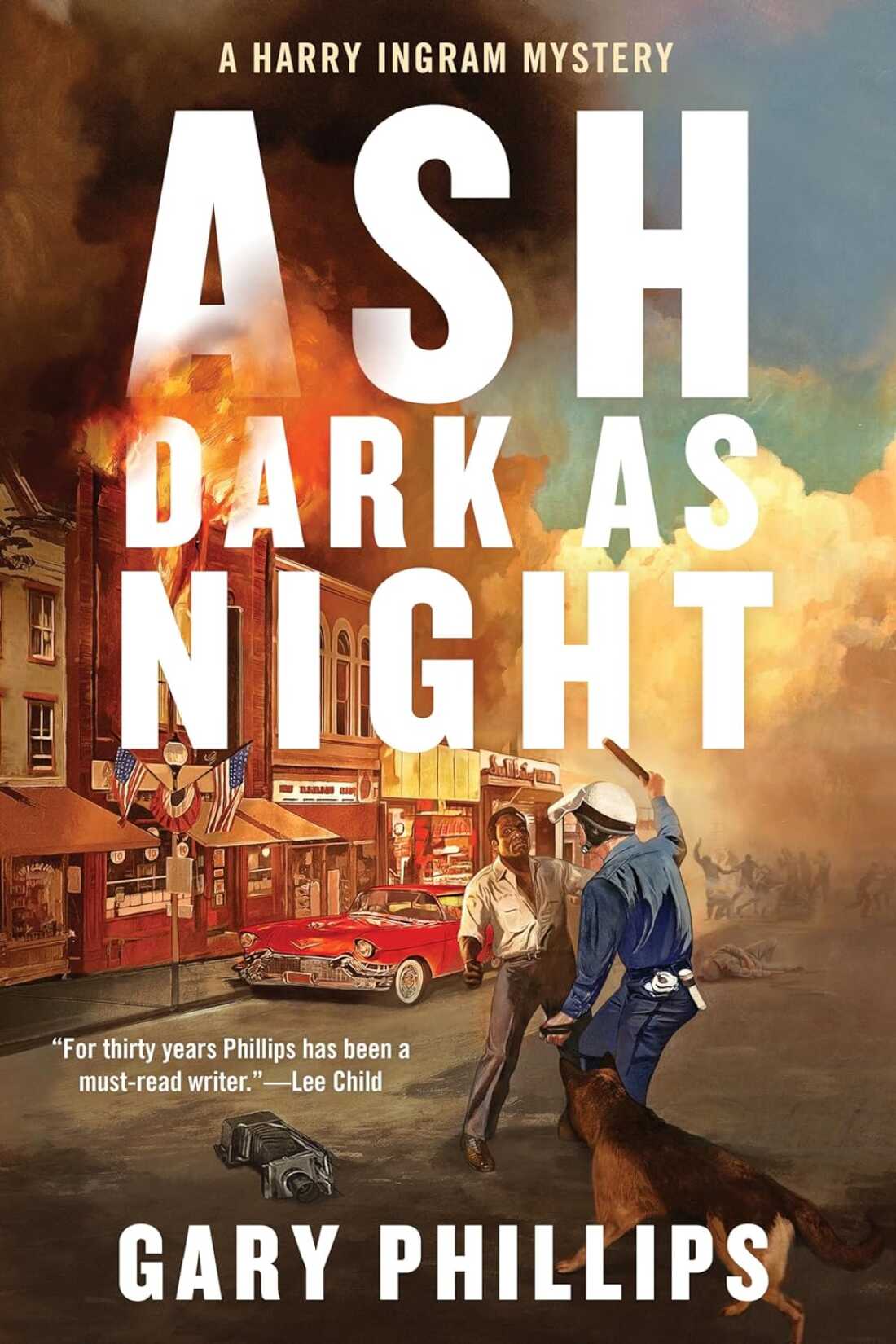
Ash Dark As Night
Penguin Random House
hide caption
toggle caption
Penguin Random House
Ash Dark as Night, by Gary Phillips
I’m beginning my recommendations with two distinctive novels that appeared this spring. Gary Phillips introduced the character of LA crime photographer and occasional private eye Harry Ingram in the 2022 novel, One-Shot Harry. The second novel of this evocative historical series is called Ash Dark as Night and it opens in August 1965 during the Watts riots. Harry, who’s one of two African American freelancers covering the riots, has looped his trademark Speed Graphic camera around his neck and headed into the streets.
We’re told that Harry’s situation is, of course, riskier than that of his white counterparts: “[M]aybe one of these fellas might well get a brick upside their head from a participant, but were less likely to be jacked-up by the law. Ingram realized either side might turn on him.” Indeed, when Harry captures the death of an unarmed Black activist at the hands of the LAPD, the photo makes him famous, as well as a target.
This novel is steeped in period details like snap-brim hats and ragtop Chevy Bel Air convertibles, along with walk-ons by real life figures like pioneering African American TV journalist Louis E. Lomax. But it’s Harry’s clear-eyed take on the fallen world around him that makes this series so powerful.

Blessed Water
Zando
hide caption
toggle caption
Zando
Blessed Water, by Margot Douaihy
You might think a mystery about an inked-up lesbian Punk musician-turned-nun is a little far-fetched; but New Orleans, the setting of the Sister Holiday series, is the city of far-fetched phenomenon, both sacred and profane. Margot Douaihy’s second book in this queer cozy series is called Blessed Water and it finds the 34-year-old Sister Holiday up to her neck in murky flood waters and priests with secrets. Douaihy’s writing style — pure hard-boiled Patti Smith — contains all the contradictions that torment Sister Holiday in her bumpy journey of faith. Here she is in the Prologue recalling how she survived swallowing a glass rosary bead:
After my prayers for clarity, for forgiveness, for a cigarette, … deep inside the wet cave of my body was an unmistakable tickle. …
The bead fought my stomach acid for hours, leaching its blessing or poison or unmet wish. Anything hidden always finds a way to escape, no matter its careful sealing.
Amen to that, Sister Holiday.

The Expat
Pegasus Crime
hide caption
toggle caption
Pegasus Crime
The Expat, by Hansen Shi
The main character in Hansen Shi’s excellent debut spy novel is an alienated young man named Michael Wang. He’s a first generation Chinese American a few years out of Princeton who’s hit the bamboo ceiling at General Motors in San Francisco, where he’s been working on technology for self-driving cars. Enter a femme fatale named Vivian who flatters Michael into believing that his brilliance will be recognized by her enigmatic boss in China. Once Michael settles into life in Beijing, however, he realizes he’s been tapped, not as a prodigy, but a patsy. The Expat wraps up too abruptly, but it’s also true that I wanted this moody espionage tale to go on longer.

The God of the Woods
Riverhead Books
hide caption
toggle caption
Riverhead Books
The God of the Woods, by Liz Moore
Liz Moore’s extraordinary new literary suspense novel reminds me of Donna Tartt’s 1992 debut, The Secret History. There are superficial similarities: Both are thick intricate novels featuring young people isolated in enclosed worlds — in Tartt’s story, a Vermont college campus; in Moore’s, a summer camp in New York’s Adirondack mountains. But, the vital connection for me was a reading experience where I was so thoroughly submerged in a rich fictional world, that for hours I barely came up for air.
There’s a touch of Gothic excess about The God of the Woods, beginning with the premise that not one, but two children from the wealthy Van Laar family disappear from Camp Emerson in the Adirondacks 14 years apart. Moore’s story jumps around in time, chiefly from the 1950s into the ’70s and features a host of characters from different social classes — campers, counselors, townspeople and local police — and the Van Laars themselves.

The precision of Moore’s writing never flags. Consider this reflection by Tracy, a 12-year-old camper who recalls that: “Her father once told her casually that she was built like a plum on toothpicks, and the phrase was at once so cruel and so poetic that it clicked into place around her like a harness.”
Moore’s previous book, Long Bright River, was a superb social novel about the opioid crisis in Philadelphia; The God of the Woods is something weirder and stranger and unforgettable.
Happy summer reading wherever your tastes take you.
Lifestyle
Barack Obama's Half Sister Auma Tear-gassed Live on Air During Kenya Protests
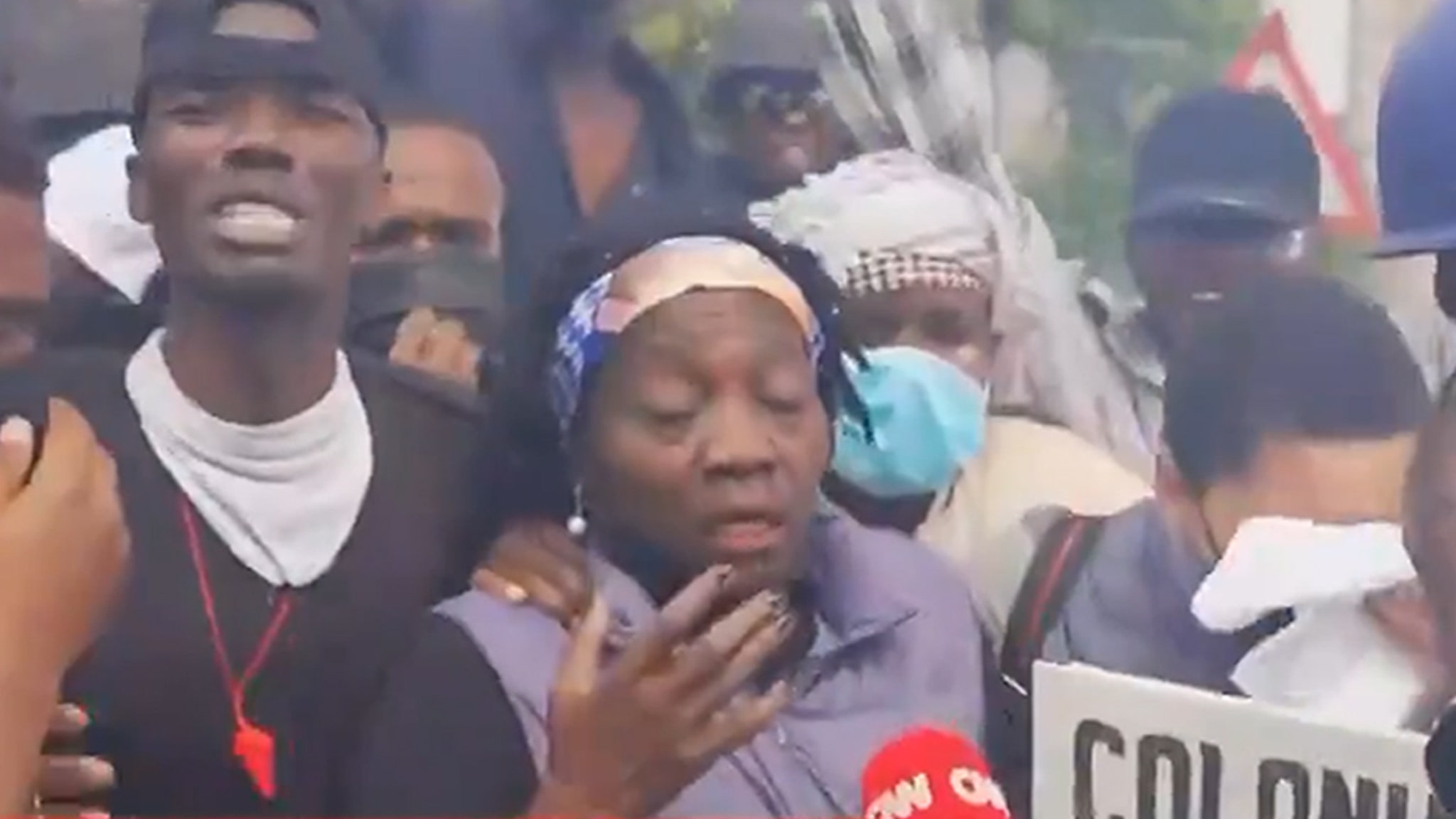
CNN
Barack Obama‘s half sister was inadvertently tear-gassed during a deadly demonstration in Africa … and it’s all on video.
Auma Obama was being interviewed by CNN in the middle of Tuesday’s protests in Nairobi, Kenya — when all of a sudden, explosions could be heard in the background … and she starts coughing and tearing up.
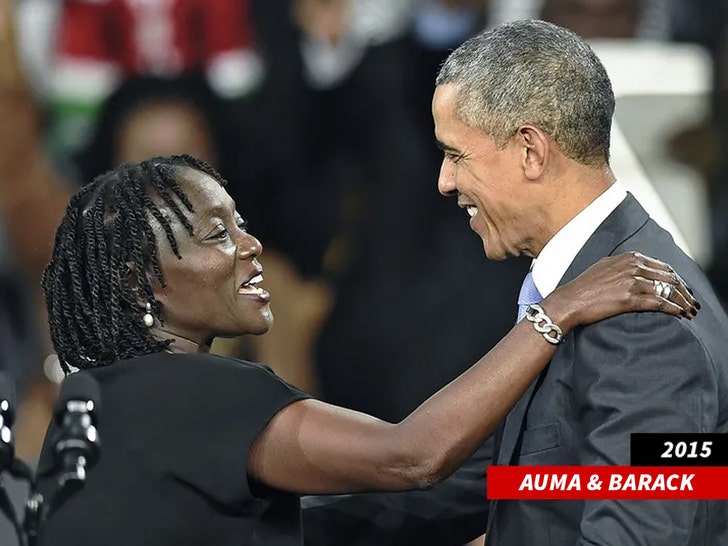
The ex-Prez’s half sibling — to whom he’s related on his father’s side — says she can’t see anymore because of tear gas in the air … and CNN field reporter Larry Madowo starts coughing too as the street interview is forced to end.
Before police unleashed tear gas on protesters outside parliament, Auma — a Kenyan activist — told CNN she was at the demonstration to show the world what was happening to the young Kenyans demonstrating for their rights with flags and banners.
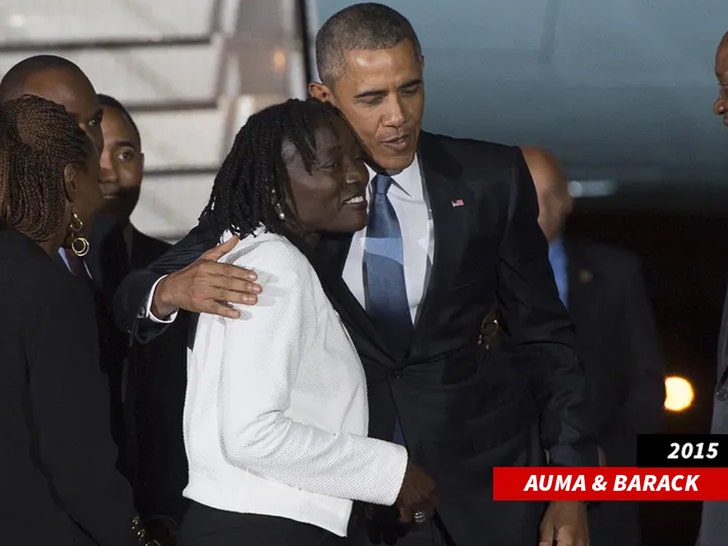
Widespread protests are breaking out in Kenya, where citizens are pushing back against a controversial new finance bill, which includes proposed tax increases.
Reports out of Nairobi say police opened fire on protesters who tried to storm parliament after tear gas and water cannons failed to disperse crowds … with at least 5 people shot dead and dozens more wounded.
Barack hasn’t addressed what happened to his sister just yet — but we know they’re close.
Lifestyle
This time last year, Hollywood writers were on strike. Now, many can’t find work

Striking Writers Guild members picket alongside SAG-AFTRA members outside Netflix studios in September 2023.
Mario Tama/Getty Images
hide caption
toggle caption
Mario Tama/Getty Images
This time last year, Hollywood writers were picketing outside the offices of major studios and streaming companies. Throughout their nearly five month-long strike, writers often convened at Bob’s Big Boy, where TV host Drew Carey often picked up the check.
“I remember eating a lot of hash browns, and then if it was dinner, they’ve got a good soup situation,” says Taylor Orci, who recently returned to the Burbank diner to reminisce with writer Bill Wolkoff.
“It saved us,” Wolkoff nods. “It was a vote of confidence that ‘I believe in writers.’ Thank you, Drew Carey, for that.”
Wolkoff writes and produces the series Star Trek: Strange New Worlds. Last year, when the show took a pause, he was a Writers Guild of America strike captain outside CBS Studios in L.A. Thanks to the union’s new contract, he’s looking forward to getting higher streaming residuals with each hit season.
“That’s going to be a noticeable difference in my life,” Wolkoff says. “And the AI protections too. I mean, we got in our contract language that ensures that AI will not replace writers. That’s huge.”
But, he admits, he’s one of the lucky few Hollywood writers still working these days.
Like many others, Taylor Orci still struggles. One writing job fell through recently, and they’re still living on loans, with max’d out credit cards and a baby on the way.

Writer Taylor Orci outside Bob’s Big Boy, a diner in Burbank.
Mandalit del Barco/NPR
hide caption
toggle caption
Mandalit del Barco/NPR
“I knew it was gonna be slow, but I thought I’d have a job,” they say. “It’s tough right now to find work, especially if you didn’t have a job before.”
‘We needed a sea change’
Across town in Encino, Lannet Tachel says that the union’s gains are helpful, but, “in the long run, you still have to be one of the lucky few to get in so that help applies to you.”
Her writing partner Corey Grant agrees: there’s not much production these days.
“It was hard before the strike. It’s even harder now,” he says. “I think it’s a backlash because of the strike. I think they’re trying to … shore up their pockets a little bit, but it’s less TV, less episodes getting made, tighter budgets, half the shows got canceled.”

Lanett Tachel and writing partner Corey Grant.
Mandalit del Barco/NPR
hide caption
toggle caption
Mandalit del Barco/NPR
NPR reached out to eight major studios and streamers for a response. They didn’t get back to us. But the president of the WGA West, Meredith Stiehm, says those production changes started before the strike, not because of it. She says there had been a boom, with streaming companies ordering a glut of new shows. But in 2022, so-called “peak TV” went bust.
“Netflix announced that they’d lost subscribers. Streaming was not profitable for anybody. It was kind of a failed model. Everybody started retreating. At the same time,” she says, “our contract was untenable and we needed a sea change.”

The WGA spent nearly five months on strike last year starting in May. Actors and performers in the union SAG-AFTRA also went on strike last summer. The writers union reached a tentative deal with studios in September, with new residual models in streaming, new minimum lengths of employment for TV gigs, more guaranteed paid work for feature films and other protections. Then, SAG-AFTRA reached their own tentative agreement in November.
“When we all returned to work, the decline continued, meaning not as much content is being ordered,” Stiehm says. “And it seems that the studios are sort of regrouping, and writers are feeling the post-Peak TV pinch.”

During a recent earnings call, SONY Pictures Entertainment CEO Tony Vinciquerra said his company was hit by more than just the streaming revolution.
“We had to go from a pandemic where production was severely limited, to a strike, where there was no creative work being done for literally seven or eight months,” he said. “It had to restart. And that’s what you’re seeing right now.”
The industry continues to transform, with shrinking ad revenue and layoffs at just about every entertainment and media company. Last month, Netflix announced it would produce more non-scripted material, like reality shows and game shows. Disney said it will offer even more live sports through ESPN over the coming years.
Nick Geisler got his first writing job in Los Angeles in 2018. He was a strike captain outside Amazon Studios last year. After the strike ended, he says, he returned for a few months to the writers room for the Disney show Bunk’d: Learning the Ropes. But he says he hasn’t had much luck with other studios.

“There’s just no appetite for risk,” Geisler says. “And there’s a lot of requests for rewrites. A lot of them are free. There’s a lot of, ‘Hey, we’re so, so close. Can you just make these changes and get it over the line?’ ‘Hey, we’re turning it into our higher ups tomorrow. Can you do this in three hours?’ I don’t think that’s really changed much. Because of the climate we’re in, there’s a lot of ‘Well, I’ll just get this done because there’s not a lot going on.’”
Now, he says, “I’m actually working on a short film for a writer that I met on the picket line.”
‘This time feels different’
Things are tough for those who’ve been in the business for decades, too.
“I reach out to my agent and he tells me it’s really bad out there. Hopefully it will turn around,” says Jon Sherman, who hasn’t had a writing assignment for three years.

Jon Sherman began his career in Hollywood three decades ago.
Mandalit del Barco/NPR
hide caption
toggle caption
Mandalit del Barco/NPR
He began his career 30 years ago, writing for Bill Nye the Science Guy. He also wrote and produced for the original TV series Frasier. Sherman was a WGA strike captain outside Amazon Studios last year.
“It’s been the first time in a long career, for which I’m grateful, that I’ve had a real long layoff. I’ve reached a point where I’m like, ‘Oh, this time feels different.’”
To pay the bills, Sherman says he was in a focus group for dried fruit and in a UCLA research study on exercise. He’s also now a TV game show contestant. But he sure would still love to write for television.
Note: NPR News staffers are also members of SAG-AFTRA, the union of actors and performers that also went on strike last year. Broadcast journalists are under a different contract, however, and were not on strike.
-

 News1 week ago
News1 week agoJoe Biden, Barack Obama And Jimmy Kimmel Warn Of Another Donald Trump Term; Star-Filled L.A. Fundraiser Expected To Raise At Least $30 Million — Update
-

 News1 week ago
News1 week agoIt's easy to believe young voters could back Trump at young conservative conference
-

 World1 week ago
World1 week agoRussia-Ukraine war: List of key events, day 842
-

 World1 week ago
World1 week agoProtesters in Brussels march against right-wing ideology
-

 World1 week ago
World1 week agoSwiss summit demands 'territorial integrity' of Ukraine
-

 News1 week ago
News1 week agoA fast-moving wildfire spreads north of Los Angeles, forcing evacuations
-

 World1 week ago
World1 week agoAl-Qaeda affiliate claims responsibility for June attack in Burkina Faso
-

 Politics1 week ago
Politics1 week agoJudge rules Missouri abortion ban did not aim to impose lawmakers' religious views on others





